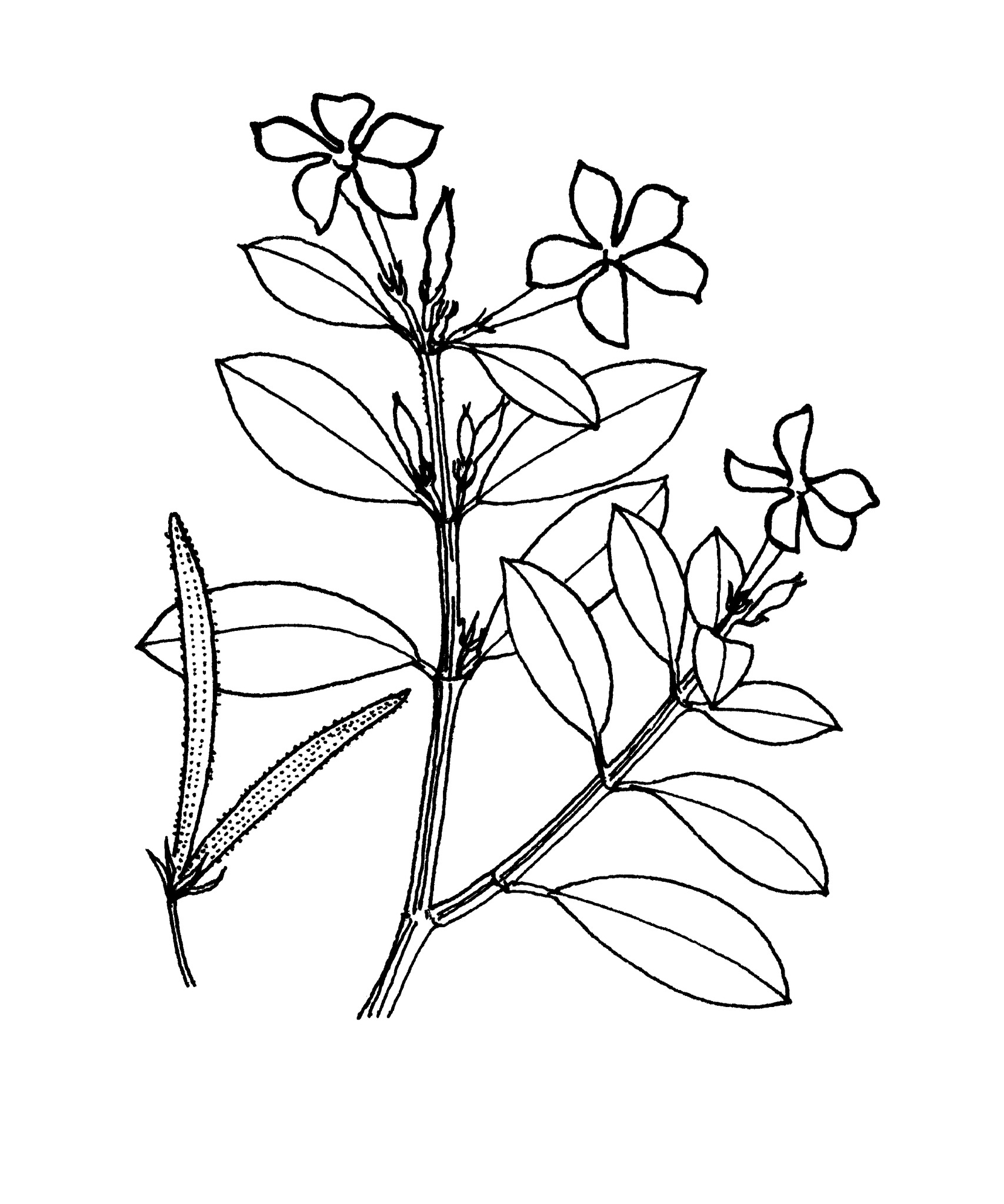
From the Greek katharos — pure, and anthos — flower, alluding to the neatness and beauty of the flowers.
Perennial or annual herbs, evergreen; latex white. Stems herbaceous to wiry, without spines, not stoloniferous. Leaves opposite, stalked; blade well developed; colleters absent at base. Inflorescence alternating left and right at adjacent nodes, usually 1- or 2-flowered. Flowers scentless, stalked. Corolla salver-shaped; tube cylindrical; lobes convolute in bud, overlapping to the left. Corolline corona absent. Stamens enclosed, attached near top of tube, not sticking to style head. Disk of 2 linear-oblong scales alternate with carpels. Fruit of 2 dehiscent membranous follicles; seeds numerous, oblong to ellipsoid, not winged, without hair tufts.
One species is widely cultivated in Australia and in recent years a number of named cultivars has been distributed.
Sensitive to frost.
C. roseus is a source of alkaloids used in medical research.
Seeds.
Herb or subshrub, not stoloniferous.
8 species, 7 endemic to Madagascar and 1 endemic to India.
Lawrence (1959), Plaizier (1981), Forster (1996a), van Bergen (1996), Snoeijer (1996).
Source: (2002). Apocynaceae. In: . Horticultural Flora of South-eastern Australia. Volume 4. Flowering plants. Dicotyledons. Part 3. The identification of garden and cultivated plants. University of New South Wales Press.
